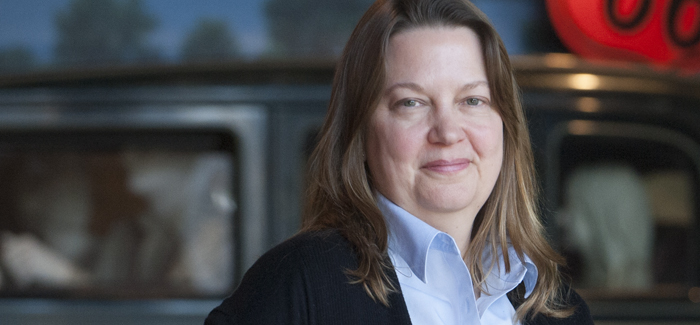
[[{"type":"media","view_mode":"media_original","fid":"837","attributes":{"alt":"","class":"media-image","height":"354","typeof":"foaf:Image","width":"460"}}]] (Photo courtesy Smithsonian National Museum of American History)
Fiesta dinnerware An instant hit when the Homer Laughlin China Company introduced it in 1936, sold by the piece in five original colors.In the 1990s, the museum didn’t have any Fiestaware, a popular dinnerware from the ’30s. We got an article written in the Washington Post saying we were interested in collecting Fiestaware that came with stories. We got lots of calls and spent the next few months going to people’s houses and interviewing them about their Fiestaware.
We got some from a family in Vienna, Virginia. The dad had worked in a coal mine in Pennsylvania, lost his job, ended up riding the rails and then settled down and got married. They didn’t have much money but the mom would put away a little bit of her grocery money every week and save up to buy some Fiesta. It was one of earliest affordable types of dinnerware that you could buy piece by piece instead of the whole set. For them it was really special; they only used it on holidays and special occasions.
Then I talked to somebody else from a well-to-do family and they just used it for luncheon at their lake cottage when the servants brought them an informal lunch. It all looks alike—Fiesta is Fiesta. But there are all sorts of different stories about how it was used and what it meant to people.
[[{"type":"media","view_mode":"media_original","fid":"840","attributes":{"alt":"","class":"media-image","height":"354","typeof":"foaf:Image","width":"460"}}]] (Photo courtesy Smithsonian National Museum of American History)
Arms of Pennsylvania plate American views on white-glazed earthenware, made in England about 1829.We have this wonderful collection of English pottery made for the American market that we got from a woman named Eloise Baker Larsen. It’s this beautiful blue and white china from the early 1800s. On the second floor of the museum, we’ve displayed 12 of the 13 “Arms of the States” plates that were manufactured by Thomas Mayer in Burslem, England. The thirteenth plate, New Hampshire, is a mystery. Nobody seems to have it.
I really like that collection; we have about 300 pieces. Most have images of state capitals and other traditional buildings, or scenes from places like the Erie Canal and Fort Ticonderoga. But spattered throughout are plates with insane asylums and penitentiaries. Why? I have no idea. I guess the English potters must have come across the images somewhere and just thought they were interesting buildings.
[[{"type":"media","view_mode":"media_original","fid":"839","attributes":{"alt":"","class":"media-image","height":"354","typeof":"foaf:Image","width":"460"}}]] (Photo courtesy Smithsonian National Museum of American History)
Bracero oral history project photograph Mexican workers being sprayed with DDT in Hidalgo, Texas, 1956.I’ve been really lucky to work on this project about the bracero program, to travel around the country and work with students to interview former bracero laborers, most of whom are older now, and capture their stories. The most of amazing thing was meeting the men. Most of them don’t speak English and I don’t speak Spanish. But the students who were interviewing them came to think of them as the greatest generation, like the World War II vets who hadn’t talked about their experiences and kept them bottled up.
The families would contact us to say, “My grandfather was a bracero, he’s never really talked about it but I’d love to have him to tell you a story.” We collected a few hundred oral histories from these men and others related to the program—clerks interviewing them coming across the border, border agents, and people in the towns they came to—we tried to get a really balanced look at the program.
These were tough guys, but they would talk about the things they went through and get really emotional. For me this reinforced how complex history is. Immigration can be so polarizing, but when you actually talk to the people, it’s such a different story.
These guys came from little towns in southern Mexico and didn’t really know what they were getting into. They had incredibly arduous journeys to get to the border. When they got to the border, they were stripped and sprayed with DDT—we have pictures. The work and living conditions could be really arduous. A lot of them had horrible experiences but don’t necessarily regret it.
Most were sending money back to Mexico. One of the men came to see us with a box full of receipts from his wire transfers. Every week he sent money back, maybe only $7 or $20, but it was huge for his family. We scanned most of the documents and items the men brought in, with their permission, and gave them the originals back. It’s all part of an online archive. We also created a bilingual travelling exhibit that would be affordable enough to get into the communities where immigrant populations were; two versions of it have been traveling nonstop since 2010.
We certainly weren’t going to get pulled into any contemporary discussions about immigration. But we figured that we could tell the truth about the past and people can make of that what they will.
Interview edited and adapted by Elizabeth Station.